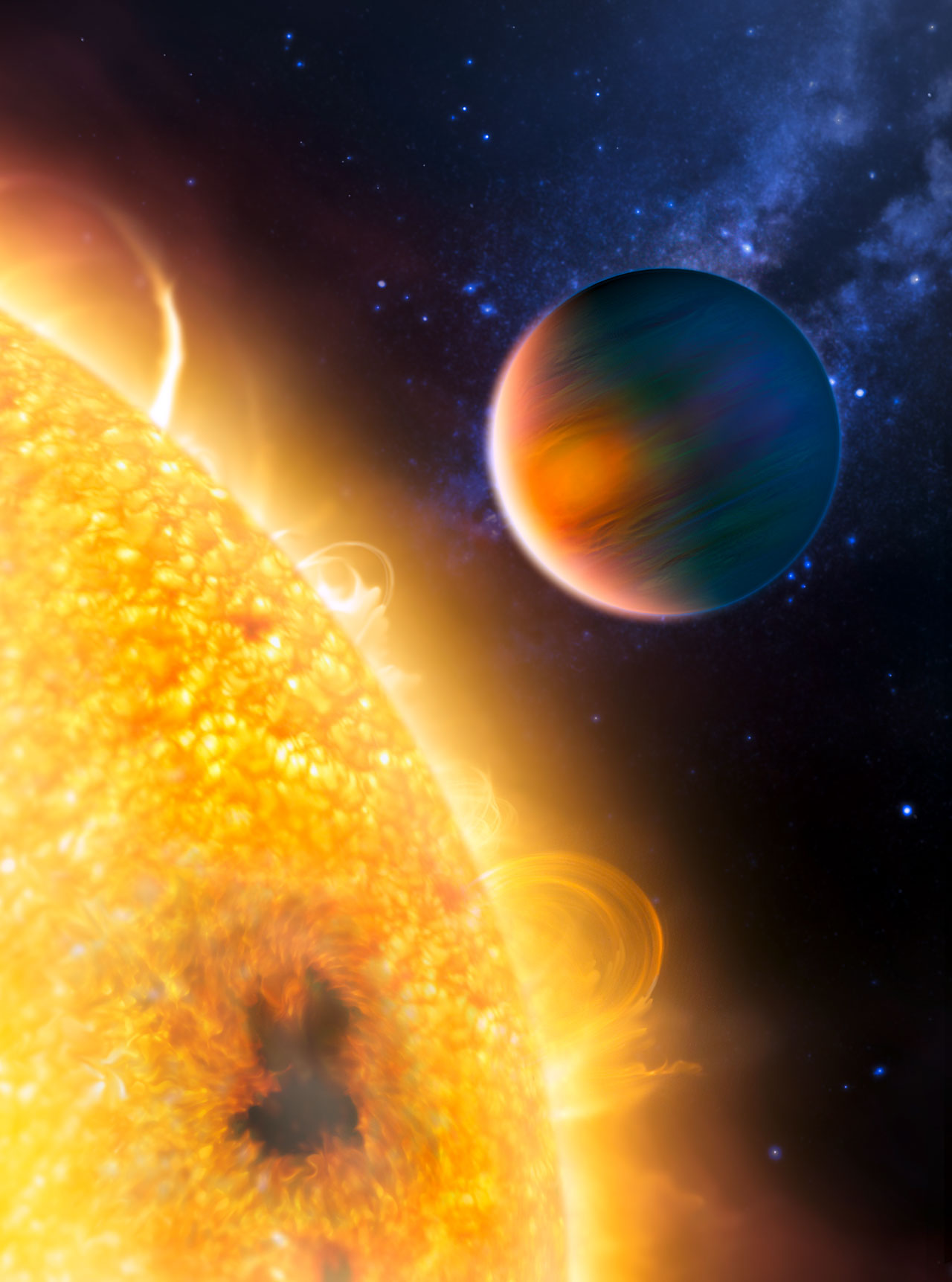
artist's impression of the extrasolar planet HD 189733b, now known to have methane and water. Astronomers used the Hubble Space Telescope to detect methane - the first organic molecule found on an extrasolar planet

Nestled amongst the vast clouds of star-forming regions like this one lie potential clues about the formation of our own Solar System.
This week’s NASA/ESA Hubble Space Telescope Picture of the Week features AFGL 5180, a beautiful stellar nursery located in the constellation of

It's beginning to look a lot like Christmas in this NASA/ESA Hubble Space Telescope image of a blizzard of stars, which resembles a swirling storm in a snow globe.These stars make up the globular cluster Messier 79, located about 40 000 light-years from Earth in the constellation of Lepus (The Hare).

WR 25 and Tr16-244, at the bottom of the image, are located within the open cluster Trumpler 16. This cluster is embedded within the Carina Nebula, an immense cauldron of gas and dust that lies approximately 7500 light-years from Earth in the constellation of Carina, the Keel